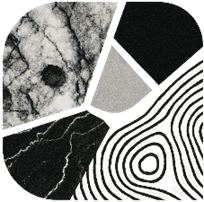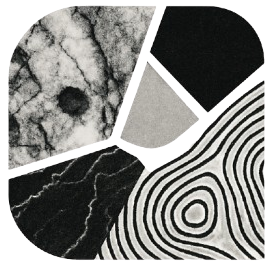Historical background
Portuguese marble is quarried in the “Marble Triangle” of Alentejo—Estremoz, Borba, and Vila Viçosa—along the flanks of the Estremoz Anticline, a Paleozoic fold where massive marble beds rise to the surface. The earliest archaeological traces of its use date to 370 BCE, and the Romans began systematic extraction in the 1st century CE, sending stone to the Temple of Diana in Évora and the Roman theatre of Mérida.
Through the Middle Ages and the Age of Discovery, Portuguese marble became a symbol of royal power: it clad the palaces of Vila Viçosa, Lisbon, and Sintra, while Portuguese navigators shipped blocks to Africa, India, Macau, and Brazil. Today the stone graces several UNESCO World Heritage sites—the Jerónimos Monastery and Belém Tower in Lisbon, the Escorial Monastery in Spain—as well as Notre-Dame de Paris and Versailles.
Through the Middle Ages and the Age of Discovery, Portuguese marble became a symbol of royal power: it clad the palaces of Vila Viçosa, Lisbon, and Sintra, while Portuguese navigators shipped blocks to Africa, India, Macau, and Brazil. Today the stone graces several UNESCO World Heritage sites—the Jerónimos Monastery and Belém Tower in Lisbon, the Escorial Monastery in Spain—as well as Notre-Dame de Paris and Versailles.
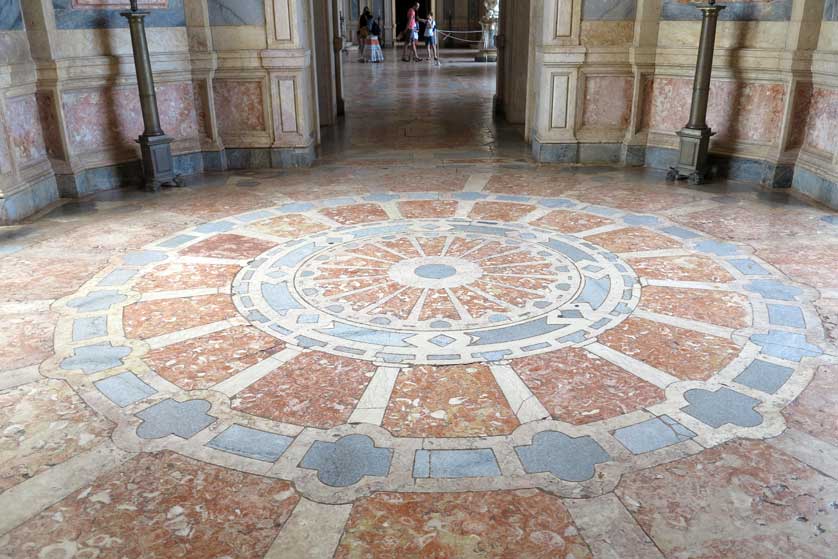
The 20th century brought an industrial leap: diamond wire and modern handling equipment made it possible to move blocks weighing tens of tonnes. After the economic liberalisation of the 1970s, marble exports soared, and the Estremoz district is now considered the world’s second most important marble centre after Carrara.
Geography of deposits
The chief treasure house of Portuguese marble lies in southern Alentejo, where the municipalities of Estremoz, Borba, and Vila Viçosa (Évora District) meet. Here the Estremoz Anticline—about 42 km long and 8 km wide—forms a narrow geological arch in which thick Paleozoic marble beds break the surface. The “Marble Triangle” stretches from Sousel in the north to Alandroal in the south, encompassing Vila Viçosa and Borba.
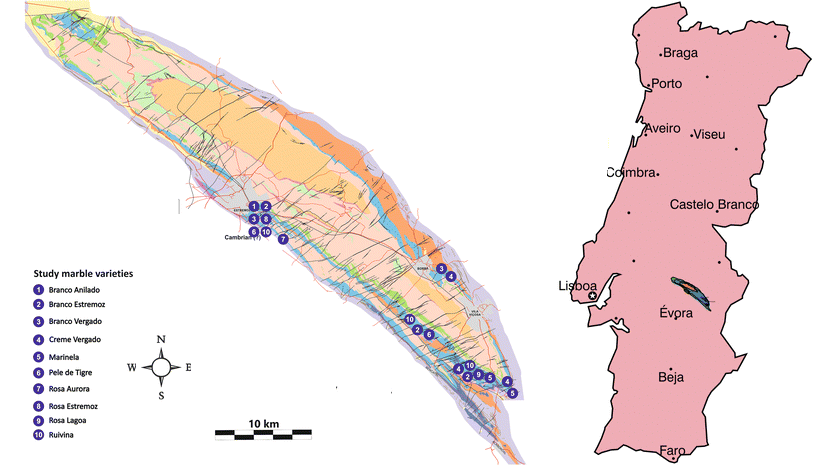
Vila Viçosa is aptly nicknamed Ouro Branco—“white gold”: some 85 percent of all Portuguese marble comes from this area, where 29 quarries are currently in operation. Beyond the cluster only small pockets of coloured stone appear—green Verde Viana near Viana do Alentejo, or cream and white varieties in Pardais, Vigararia, and Bencatel—but none approach the scale of the legendary Marble Triangle.
Portugal’s marble quarries
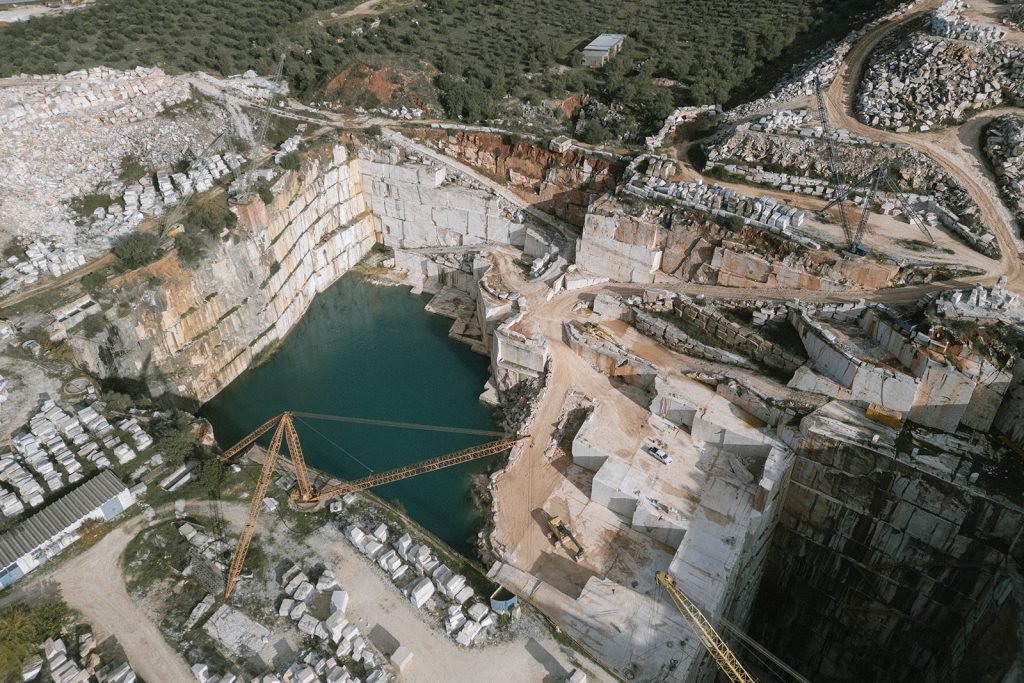
The quarries of the Marble Triangle resemble giant amphitheatres: the dazzling white-and-pink walls against a brilliant blue sky have become an icon of Alentejo. Extraction is by stepped open-pit methods, with 5–8 m wide benches so heavy excavators and loaders can manoeuvre safely. Individual beds reach 40 m thick, and some workings descend more than 100 m, their walls reading like colossal geological cross-sections, each colour occupying its own “gallery.”
On the upper tiers lie the paler Branco Estremoz and Estremoz Creme; deeper down appear the pinks of Rosa Aurora and Rosa Portugal.
On the upper tiers lie the paler Branco Estremoz and Estremoz Creme; deeper down appear the pinks of Rosa Aurora and Rosa Portugal.
